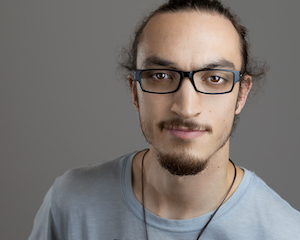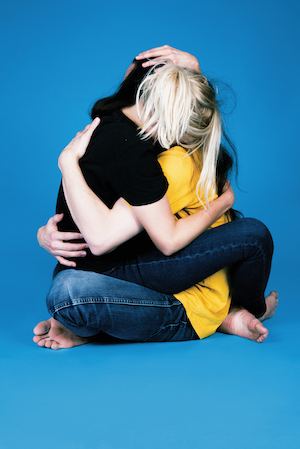Ah young love! The giddy highs while it lasts, the despair when it ends… but it’s the aftermath that UK-based playwright and performer Iskandar R. Sharazuddin explores in his latest work Post-Mortem, which will make its Australian premiere at Fringe World 2020.
The aftermath of first love
17 January 2020
- Reading time • 8 minutesDance
More like this
- How to watch ballet
- STRUT Dance comes of age
- Fairytale leaps to life with fun twist
This article is sponsored content.
In his Fringe Session Q&A, Sharazuddin gives us the lowdown on Post-Mortem and why this Perth season is also a homecoming for his interdisciplinary company Ellandar.
Seeasaw: Iskandar, can you describe your artistic practice to our readers?
Iskandar R. Sharazuddin: I am a playwright who is pretty tied to a text-based process. That includes when I work on non-verbal pieces of theatre. I still approach the storytelling and the structure of the piece by looking at it on paper first, usually with a lot of post-it notes. I am prolific at writing draft after draft, I tend to work by knocking out around 10-15 drafts of a piece before I can feel remotely comfortable with it.

S: Post-Mortem isn’t your first Fringe World show. What drew you back to the festival?
IRS: I presented a production at Fringe World from 2012 – 2016 with my [multidisciplinary performance] company Ellandar, which was founded here in Perth in 2010. In 2017 we moved our base permanently over to London. Last year we took Post-Mortem to Edinburgh Fringe with our co-producer 45North. We decided that this was a piece we wanted to find further opportunities for and to reach a wider audience with. My familiarity with Fringe World, plus the feeling that WA and the creative sector in Perth was where Ellandar “grew up” as a company and where we cut our teeth as theatre-makers, meant it was a festival I was keen to revisit.
S: Tell us about Post-Mortem!
IRS: “Post-mortem”, by its definition, means: an analysis of an event after it has occurred, especially in order to determine why it was a failure. Post-Mortem is a play about young giddy love, the trauma that outlives it, and what happens when we are confronted with the hard truth that perhaps we haven’t moved on. It is the story of Nancy and Alex who met at seventeen, fell in love, the kind of love that is obsessive, whole-hearted, and knotted together, but then it broke. In this play we meet them ten years later, at their best friends’ wedding. At this event they have to confront conflicting narratives about a shared traumatic event in their lives in order to get through the wedding together as the Maid of Honour and Best Man, respectively.
S: What differentiates Post-Mortem from the 700 or so other Fringe World shows on offer?
IRS: Post-Mortem is a unique piece of theatre because it is the product of a desire to both write a piece of theatre that is universally accessible and relatable but at the same time push and stretch the form of the relationship two-hander in different directions. I wanted to explore whether we could look at how moments in the play could be heightened by a physical vocabulary. So, this show differs, because it is a play that, at times, lets the text and the words dissolve completely to become gesture, movement, and dance. In these moments the play becomes dance-theatre and two distinct theatrical forms blend to create something new and special.
S: Who will Post-Mortem appeal to?
IRS: This is a play for people who like physical theatre and dance that has been shaped by dramaturgy and story. We are trying to blend two forms and to allow them to very comfortably coexist in the same theatrical space. To me it feels like there is a balance of the two, whereas a lot of the dance-theatre I have experienced seems to weigh heavily towards dance over text or vice-versa.

I would recommend this play to people interested in dance and to people interested in new writing. In the Venn diagram of audiences there is a crossover between those two things and that is where we live.
I also think it is for the true romantics. It is for the 30-year-old who is going back to Tinder for a second or third time, unsure of what it is they’re looking for. It is for someone who has been in love but hasn’t been able to grasp onto that feeling again, due to whatever psychological barriers there may be.
S: What inspired you to write Post-Mortem…
IRS: In 2010 I wrote a play called The Hill & The Piano. It was overwritten and painfully elegiac. When I look back on it now, it is clear to me that it was a cathartic writing exercise to help me process the ending of my first love.
While I didn’t realise it at the time, writing the play planted seeds, that grew into the splurge of thoughts, which then rained down onto the page in the first draft of Post-Mortem. In many ways, the two plays are one and the same and the process of writing the latter involved disembowelling the former.
S: Aside from your show, what are you looking forward to seeing/doing at Fringe World 2020?
IRS: I have a sneaky second show at Fringe World called (un)written • (un)heard which is a brand new dance-theatre work I have developed and conceived the story for. It is about the only known British woman soldier to serve on the front line in WWI for the United Kingdom. I am definitely going to be seeing that.
As for other things. I am going to be seeing a lot of work from old friends and reconnecting with colleagues and collaborators I have not seen for some time!
S: What is your favourite part of the playground?
IRS: Nothing beats a swing.
Pictured top: ‘Post-Mortem’ performers Essie Barrow & Iskandar R. Sharazuddin.
“The Fringe Sessions” is an annual series of Q&A interviews with artists who will be appearing at Fringe World. Stay tuned for more!
Seesaw offers Q&As as part of its suite of advertising and sponsored content options. For more information head to www.seesawmag.com.au/contact/advertise
Like what you're reading? Support Seesaw.






